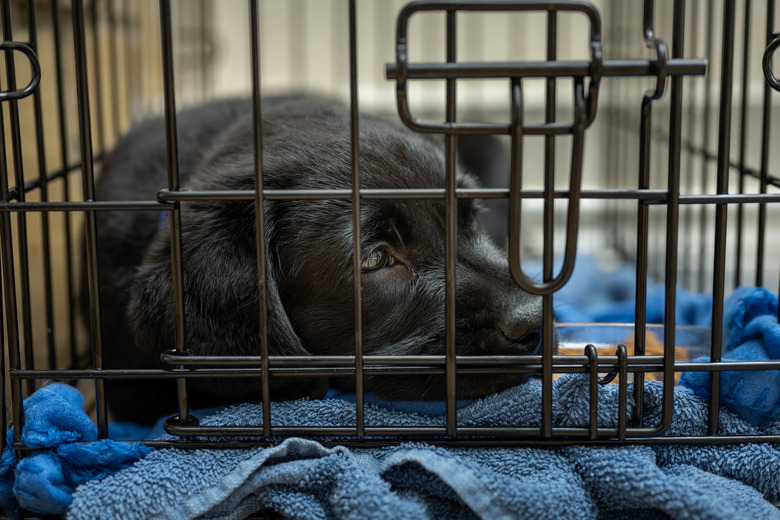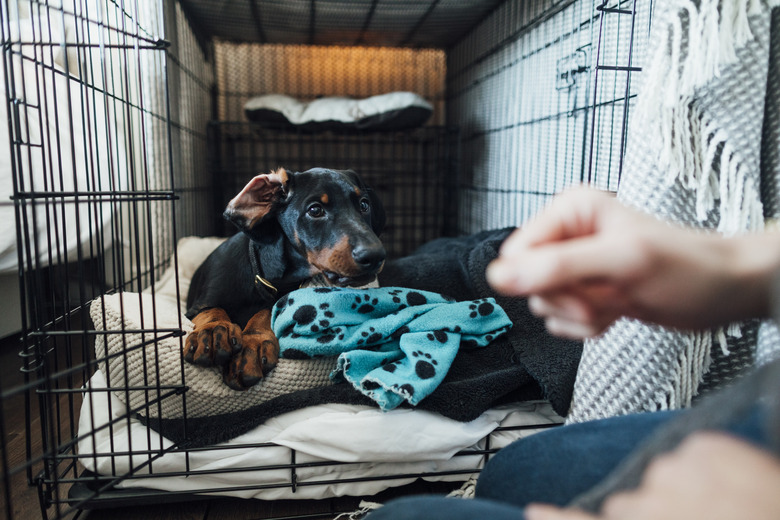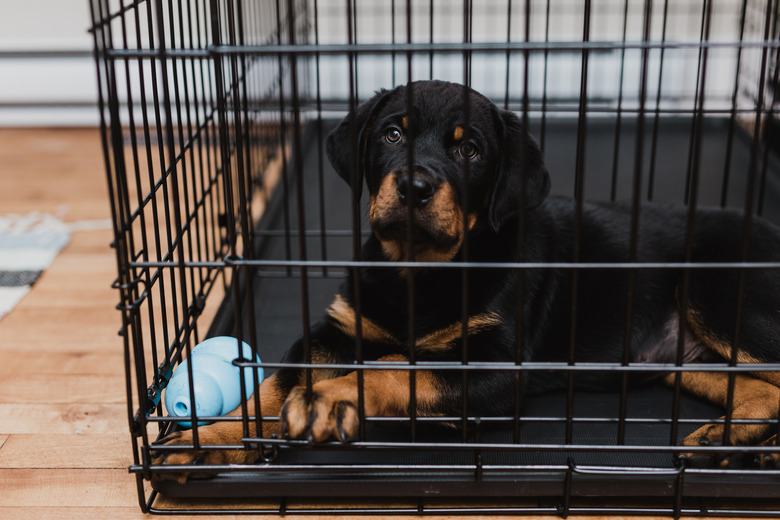How To Get A Puppy To Stop Whining In A Crate
Crate training is an important part of bringing up a new puppy. If your dog whines when she is in her crate, don't worry, it's normal. It's such a common problem that you have a variety of tried-and-true methods for dealing with the situation. In some cases, it can be more serious and you'll need professional help. Learning how to deal with a puppy hyperventilating or whining in her cage will help you make the situation less stressful for the both of you.
Check out the crate
Check
out the crate
Improper use of a dog crate can cause a pet long-term distress. Make sure the crate has no sharp edges or other pieces that might be hurting the dog. Is the floor covered with enough padding to stop the skin from pressing against the wires?
Make it comfortable. Add enough padding and consider keeping one or more toys in the cage at all times. Make sure the cage is big enough for the dog to stand up in and turn around. If you have purchased a large cage for a small dog, the cage might allow and encourage the dog to relieve itself inside. Dogs typically don't relieve themselves in smaller crates because they'll have to sit in their mess.
Look at its placement
Look
at its placement
The crate might not be the problem — the location might be. Is the cage near an air vent, grandfather clock, streaming sunlight or moonlight, humming electronic device, or near a window where the dog can see other animals outside?
Dogs like routines, and moving their bowls, beds, and other items can stress them out. Don't move the dog's cage multiple times trying to find the best location. If you feel the placement of the cage is a problem, take time to find the best spot for the cage and move the cage only once.
Sit with your dog
Sit
with your dog
When you first introduce your puppy to a crate, stay with him a while after you first put him in. Putting a dog in a cage and walking away can create confusion and separation anxiety. Start by placing the dog in the cage with the door open, and maybe toss a few high-value treats inside to encourage him to go in and check it out. Let it play with toys, nap, or roll a ball with you. After a while, close the door and continue to sit with the dog, offering more treats and positive reinforcement. Let the dog out the first time or two before you put him in and walk away. This will introduce the cage as a fun place to be, not confinement, and create positive associations with the crate.
Ignore your pet
Ignore
your pet
As difficult as it might be, you can help your dog get used to the idea of being alone in a crate by not coming to her each time she whines. It's a classic case of operant conditioning — the dog whines, you come running and give her a rub or talk to her. She learns that all she needs to do is start whining and you'll come.
When your dog starts whining after you've looked at all of the other options, see if leaving her alone will stop the whining. The problem might not have been the cage after all, and leaving her alone ends the problem.
Don’t ignore a puppy hyperventilating
Don't ignore a puppy hyperventilating
If the whining becomes loud, with barking, yelping, peeing, and trembling, something may be wrong. Call your vet or a dog trainer to see what the problem might be. If the dog doesn't whine when you're nearby, it is probably separation anxiety. As you start crate training your puppy, don't leave him in the crate for an extended period, especially by leaving the house.


